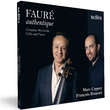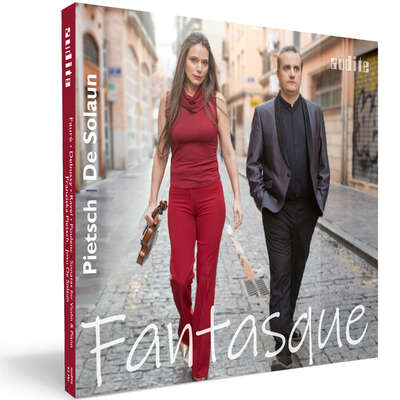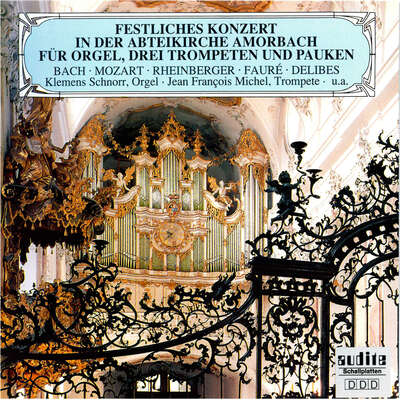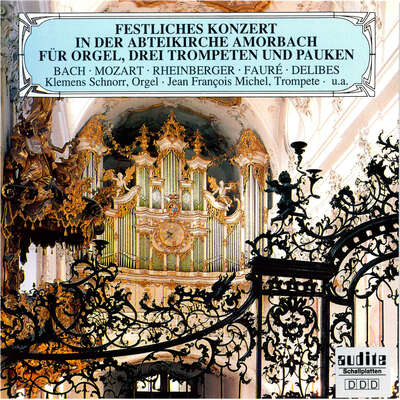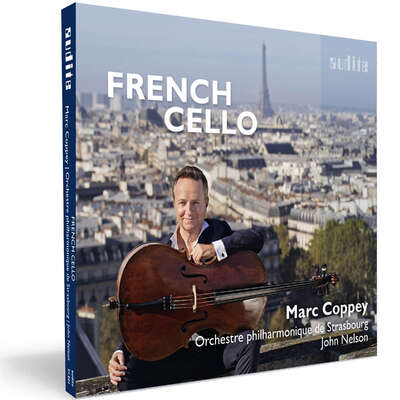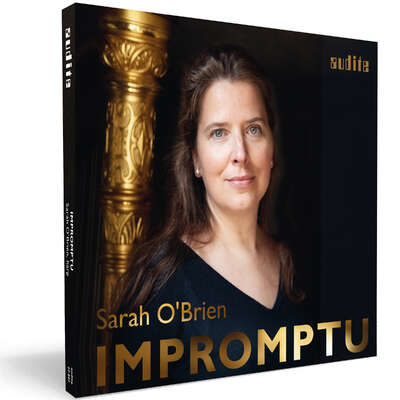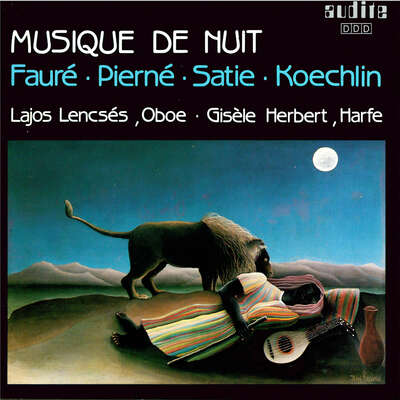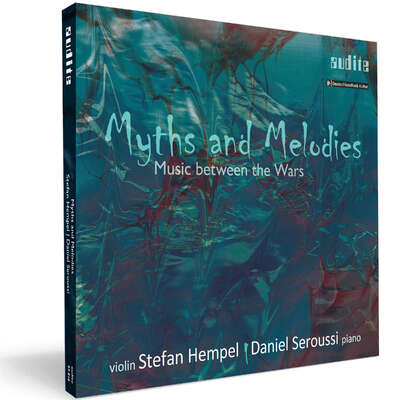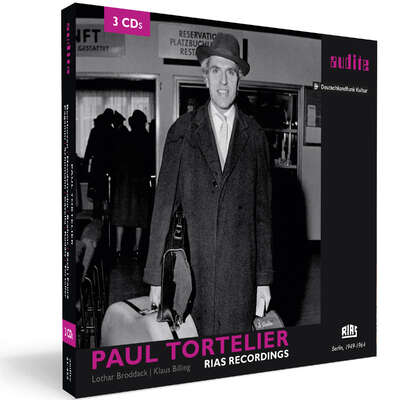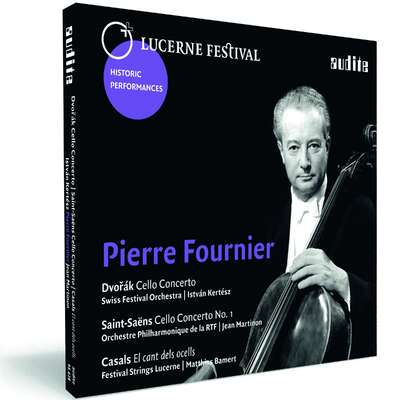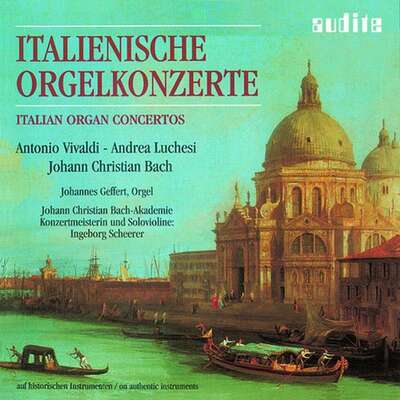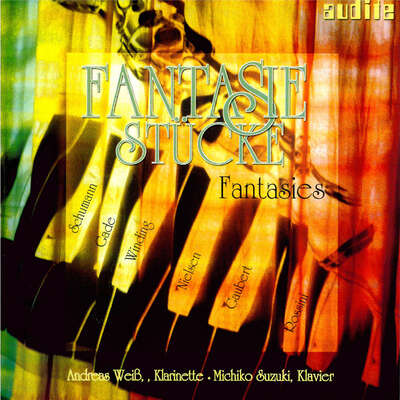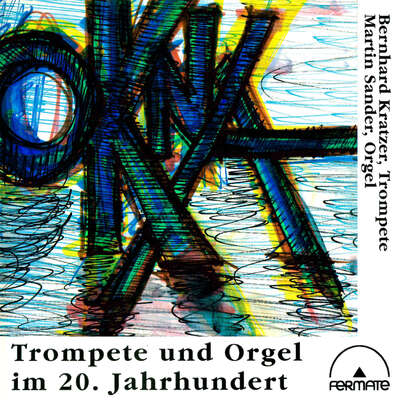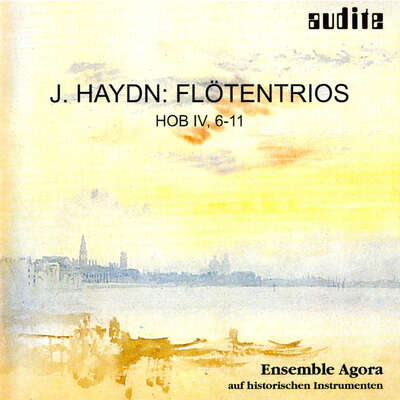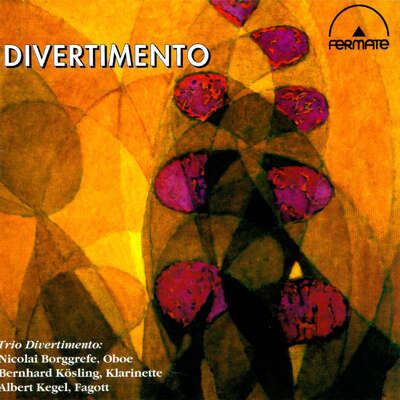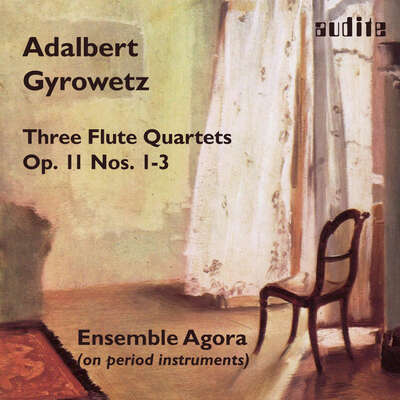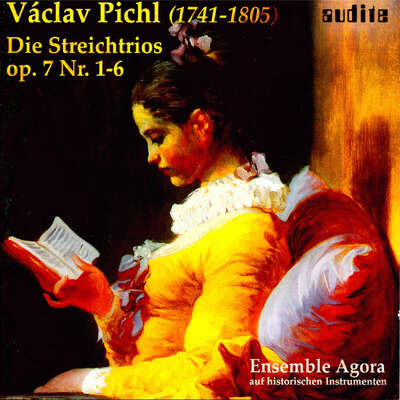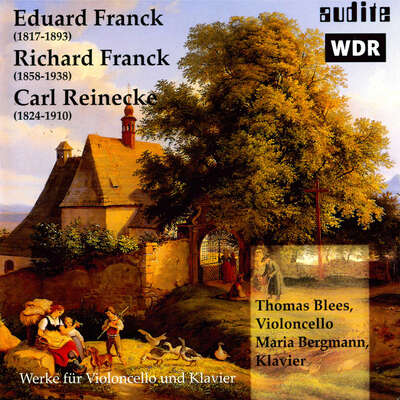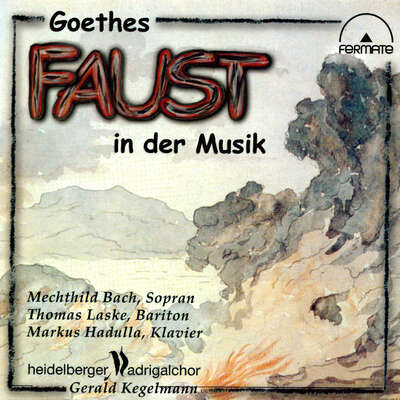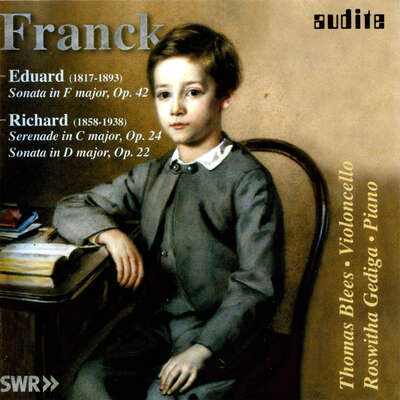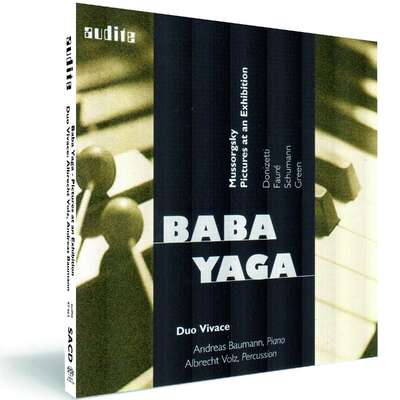
Atmospheric salon pieces and sonatas from the composer’s late period: Marc Coppey invites you on a promenade through Fauré’s works for cello. François Dumont accompanies him on an Érard grand piano which was very close to the composer’s heart – “Fauré authentique”! more
These small pieces [...] can be consumed like sweets. [...] The freshness with which Coppey and Dumont play also brings a good vitality to the music. The interpretations are well structured and admirably balanced. (Pizzicato)
Details
|
Fauré authentique
Complete Works for Cello and Piano |
|
| article number: | 97.825 |
|---|---|
| EAN barcode: | 4022143978257 |
| price group: | BCA |
| release date: | 3. May 2024 |
| total time: | 67 min. |
Bonus Material
Informationen
Reviews
Diapason | N° 744 - Mai 2025 | Marc Lesage | May 1, 2025
D'un côté, une collection d e pièces de salon d 'humeur souvent légère, complétée ici par quelques arrangements et un brêvissime duo pourMehr lesen
La sonorité nacrée d'un Erard de 1891 (emprunté au Musée de la musique) s'apparie au jeu buriné et décanté du pianiste. Un accordage un peu bas (la à 435 Hz) rehausse les harmoniques du vénérable instrument d'un liseré d'or, rai de pure lumière dans les ténèbres de la Sonate op. 109. Si le nocturne Andante profite de la complémentarité de ces timbres corsés, un contrepoint serré et un piano étonnant de staccato (qui sera affaire de goût) soutiennent l'écriture jaillissante des volets extérieurs. Le dialogue y tourne au corps-à-corps! Dans l'Andante de l'Opus 117, ils doivent s'incliner devant la noblesse et l'intensité terrassante de Paul Tortelier (nos Indispensables) ; la page recycle, il est vrai, un Chant funéraire commémorant la mort de Napoléon 1er. La méditation intimiste qu'ils cultivent là nous ramène à I'Elégie op. 24, près de quarante ans en arrière.
Habilement transcrite par le violoncelliste, la Berceuse de Dolly referme ce riche et exhaustif panorama sur une note tendre.
Neue Musikzeitung | 25. Oktober 2024 | Dr. Michael Kube | October 25, 2024 | source: https://hoerbar....
der profunden Einspielung [gelingt] der Spagat zwischen den sensiblen kleineren, für den Salon bestimmten Charakterstücken und den beiden großen Sonaten aus späterer Zeit, mit denen Fauré während und noch einmal nach dem Ersten Weltkrieg ganz eigene Akzente setzte. Dass Marc Coppey (Violoncello) und François Dumont (Klavier) hier ein großer Wurf gelungen ist, wird schon nach wenigen Takten deutlich.Mehr lesen
Classica – le meilleur de la musique classique & de la hi-fi | N° 264 - Juillet / Août 2024 | Gérard Belvire | July 1, 2024
Splendidement âpre
Marc Coppey et François Dumont présentent avec une transparence et une sobriété idéales l'oeuvre pour violoncelle et piano de Fauré
[...] on ne peut qu'admirer le raffinement des nuances apportées par nos deux musiciens à l'agogique, aux rapports dynamiques et chromatiques dans leur échange musical d'une sobre densité. Et au-delà se réjouir de l'authenticité sonore que nous propose une poignée de versions au sommet desquelles trônaient Gagnepain et Dayez, désormais surclassés par Coppey et Dumont grâce à une prise de son et un pianiste superlatifs.Mehr lesen
www.musicweb-international.com | JULY 1, 2024 | David Barker | July 1, 2024 | source: https://musicweb...
Gabriel Fauré’s works for cello and piano fall into two basic categories: the short “salon” pieces, generally lyrical and expressive, and theMehr lesen
If you know his piano quartets, quintets or violin sonatas, but are hearing the cello sonatas for the first time, then you will probably be surprised by the harshness (in places) and the (relative) lack of beautiful melodies. If, however, you know and like the cello sonatas, then you will be reading this on the basis of whether to invest in this new set. I don’t actually fall into either of these categories, having heard the sonatas before (Poltera & Stott on Chandos), but not being all that keen on them. Had I heard Coppey and Dumont’s recording first, then the “not being all that keen” opinion would have been “considerably disliked” instead. Theirs are very cool and unemotional readings (and that also applies to the shorter pieces as well). This approach simply doesn’t strike me as being right for Fauré. Yes, the First Sonata was written during the horrors of the First World War, so is hardly going to be sunny, but to make it so lacking in poetry …? The title of the recording – Authentique is “explained” in the booklet notes as referring to the interpretation, which “fully engages with the fluid rhetoric of Fauré’s musical language and does not impose a perpetual espressivo, which would be stylistically incongruous”, and also the use of an 1891 Érard piano, such as Fauré would have used. There’s no denying the latter is authentic, though the difference in sound compared to a 21st century grand is relatively small, less resonant and rich (or more transparent, as per the booklet). As for Coppey’s interpretation, I doubt any cellist uses a “perpetual espressivo” in Fauré or anywhere else, but some is appropriate and there seems to be an almost complete absence of it here.
Sadly, I haven’t finished being negative. The main problem for me is the sound of the cello: lacking in warmth, even nasal. While this actually suits the interpretations, it also magnifies the problem. I have not heard Marc Coppey on other recordings to know whether this is his standard mode of playing (and frankly, I have no incentive to find out).
Were this the only recording to comprise Fauré’s output for these instruments, this release might have some appeal. However, there are others bearing more or less the same title as this, including one by Steven Isserlis and Pascal Devoyon (RCA), which has received considerable acclaim. I haven’t heard this in its entirety, but I did stream a selection to allow me to make a comparison, one which is entirely in favour of Isserlis and Devoyon. The cello sound is so much warmer, the interplay between the two instruments clearer and the general feeling is more what I associate with Fauré.
Back when I began with MusicWeb, we had a system where recordings could be “awarded” a ThumbsUp (now called recommended), but also ThumbsDown for real disappointments. We haven’t used these for a long while, but if the ThumbsDown was still in existence, the recording would certainly “merit” it. I’m now going to listen to Domus play Fauré’s piano quartets to remind me of what his music should sound like.
Musik & Theater | JG. 45 Juli / August 2024 | Werner Pfister | July 1, 2024 Cello-Enthusiast
Man staunt und staunt: Die beiden großen Sonaten müssen Vergleiche mit Brahms kaum scheuen, und die leichtgewichtigeren Werke (Salonmusik?) erhalten hier in süperben Interpretationen das ihnen adäquate, zustehende Gewicht.Mehr lesen
Crescendo Magazine | 11 juin 2024 | Jean Lacroix | June 11, 2024 | source: https://www.cres... Violoncelle et piano de Gabriel Fauré : une intégrale plus que complète
Cet album est un bel hommage à Fauré ; il rappelle la place qu’occupe Marc Coppey sur la scène internationale du violoncelle et permet d’écouter la superbe sonorité de son Goffriller. Quant à la présence du piano Érard, que joue François Dumont avec souplesse, elle fait connaître un instrument de qualité, judicieusement sorti du musée.Mehr lesen
www.highresaudio.com | 05.06.2024 | Thomas Semmler | June 5, 2024 | source: https://www.high... LISTENING TIPP
unpretentious music that reveals all its emotion to the listener in its purest form without ever overdoing it. On this album, the sound is also excellent.Mehr lesen
Gramophone | June 2024 | Michelle Assay | June 1, 2024
Just as the musical world has moved on from the polarity of authentic versus modern performance, here comes the A-word again. This recital's claim toMehr lesen
Well, it's true that Faure's scores are not burdened by excessive indications, but espressivo certainly appears regularly, not least in the First Sonata. And whatever the theory, the cello sound falls short in terms of charm, sophistication and eloquence. The shortcomings of the current disc are particularly apparent in comparison with existing recordings, of which there are more than might be expected and whose numbers may swell as the centenary year proceeds. Particularly short-changed are those pieces that balance poise with pathos, such as the famous Elégie. Compare here the austerity and dryness of Coppey and Dumont with the elegantly weighted sound world of Isserlis and Devoyon or the quiet wistfulness of Gagnepain and Dayez on period instruments.
As with those discs, at the heart of Coppey and Dumont's programme are the two late sonatas. These are a far cry from the Fauré of sweet melodies and salon-music airiness. Darkly serious and densely textured, each sonata is a kaleidoscope of complex and unexpected harmonies and rhythmical patterns. The First, composed in 1917, clearly carries the scars of the Great War and its associated disillusionments; the jagged lines and a general feeling of unease of the first movement lead to a posttraumatic and elusive second and an impatiently flowing finale. Belonging to the period following Faure's resignation from the Conservatoire due to health issues, not least his incipient deafness, the Second Sonata is marked by greater inwardness and withdrawal, and even the playfulness of the dialogue of melodies in the first movement is now surrounded by a melancholic haziness. The second movement, echoing ' the Elégie, is a transcription of a funeral march composed for the centenary of Napoleon's death, to be performed at Les Invalides. Here again, I find Coppey and Dumont merely plodding, where Isserlis and Devoyon are majestic, and Gagnepain and Dayez are poetically mournful.
The interleaved shorter pieces return us to the Fauré of salon music, from the undulating melodies of the Sicilienne (originally incidental music to Moliere's Le bourgeois gentilhomme) to the sunlit, Catalan-tinted Sérénade (dedicated to Casals) and the rather insignificant but charming Morceau de lecture for two cellos (one of Fauré's conservatoire exam pieces). There is also the obligatory 'Après un rêve' in Casals's arrangement, here stark and direct rather than amorous and longing. The closing Berceuse from the Dolly suite in Coppey's arrangement is no match for the magical ending of Isserlis's disc, with its original version of the Op 67 Romance for cello and organ recorded in a church setting. If authenticity is still a thing, that fits the bill far more persuasively.
klassik.com
| 13.05.2024 | Dr. Jürgen Schaarwächter | May 13, 2024 | source: https://magazin....
Gegen die Erwartungen
Marc Coppey und François Dumont betonen die unkonventionelle Seite Gabriel Faurés
Spannungsvolle Tempi, feinst ausgearbeiteter Klavieranschlag und Celloton und ein unbedingter Wille zum Dienst an der Musik ermöglichen zusammen mit hervorragender Aufnahmetechnik [...] Interpretationen, die besonders stark aufhorchen lassen.Mehr lesen
www.pizzicato.lu | 03/05/2024 | Remy Franck | May 3, 2024 | source: https://www.pizz... Die zwei Faurés
Marc Coppey rahmt die beiden Cellosonaten von Gabriel Fauré mit kleineren Stücken aus der Gattung der Salonmusik, wie sie Gabriel Fauré liebte. DerMehr lesen
Man kann diese kleineren Stücke, die eher das Spiegelbild eines zarten und poetischen Temperaments sind als das Produkt einer starken und ausgeprägten Persönlichkeit, wie Süßigkeiten verzehren. In Schönheit. Manchmal auch träumend. Die Frische, mit der Coppey und Dumont spielen, bringt zudem eine gute vitale Qualität in die Musik. Die Interpretationen sind gut strukturiert und bewundernswert ausgewogen.
Die beiden Sonaten für Violoncello und Klavier gehören zum Spätwerk von Gabriel Fauré, in dem dieser Hauch von Salonmusik, der Faurés Kompositionen lange Zeit beeinträchtigte, völlig verschwunden ist.
Die Interpretationen werden Faurés festerer Handschrift und den ihn beeinflussenden äußeren Umständen – Kriegswirren, Krankheit – gerecht und nutzen gleichzeitig die harmonischen Raffinessen der beiden Werke voll aus. Die beiden Interpreten bemühen sich in flüssigem Spiel erfolgreich, die Beredsamkeit der Musik aufrecht zu erhalten und jegliche Monotonie zu verhindern.
English Translation:
Marc Coppey frames the two cello sonatas by Gabriel Fauré with smaller pieces from the genre of salon music that Gabriel Fauré loved. The composer was a frequent guest at the salon of Princess Edmond de Polignac-Singer, with whom he was close friends, as well as at the salon of Marguerite de Saint-Marceaux, wife of the sculptor René de Saint-Marceaux, on the Boulevard Malesherbes, where Fauré introduced his pupil Maurice Ravel to Parisian society.
These small pieces, which reflect a delicate and poetic temperament rather than a strong and distinctive personality, can be consumed like sweets. In beauty. Sometimes even like in a dream. The freshness with which Coppey and Dumont play also brings a good vitality to the music. The interpretations are well structured and admirably balanced.
The two sonatas for violoncello and piano are among the late works of Gabriel Fauré, in which the touch of salon music that for a long time marred Fauré’s compositions has completely disappeared.
The interpretations do justice to Fauré’s firm style and the external circumstances that influenced him – the turmoil of war, illness – while at the same time making full use of the harmonic refinements of both works. The two performers succeed in preserving the eloquence of the music and avoiding any monotony in their fluid playing.
